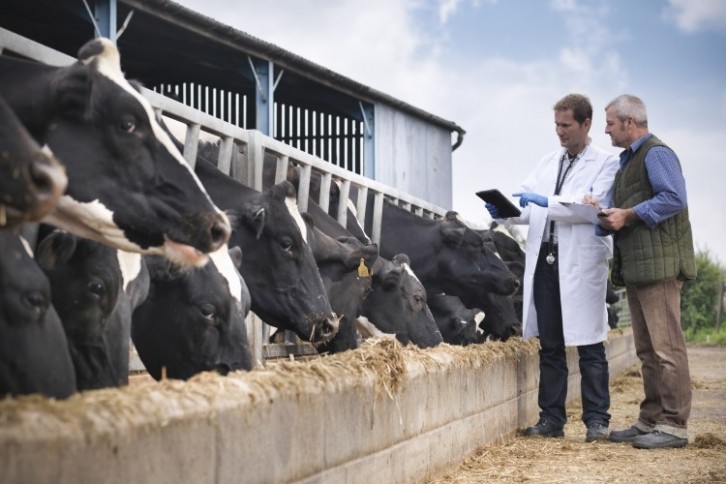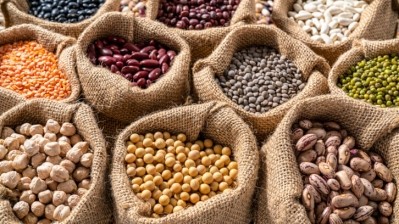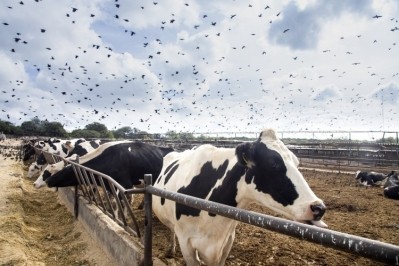From permits to quarantine: What’s next for US dairy farmers in the bird flu outbreak?

At least six states, including Texas, Kansas, New Mexico, Michigan, Idaho and Ohio, have so far reported positive cases of bird flu in dairy cows. Until recently, ruminants had never been affected by highly pathogenic avian influenza (HPAI), the virus that can be devastating for poultry producers as birds need to be culled to limit transmission.
While sick cows mustn’t be slaughtered, the virus affects older mid-lactation dairy cows causing them to suddenly dry off or produce thick, colostrum-like milk. But in addition to watching out for the core symptoms - which include sudden decrease in lactaction, thicker milk, and a drop in feed consumption - producers nationwide have been told to bolster biosecurity measures, such as keeping cattle away from waterfowl, limiting access to cattle, keeping a visitors log, and using gloves and protective equipment, particularly if working with infected animals.
Recent cow-to-cow detections in Michigan and a rare cow-to-human detection led the state of Nebraska to issue movement restrictions, with concerns about quarantining herds and dealing with permits growing louder.
But the USDA hasn’t recommended mandatory quarantine, and is believed to be against imposing movement permits. With this being a fast-developing situation, however, what may a quarantine or the introduction of permits look like?
Alex Hamberg, bureau director of the Pennsylvania Department of Agriculture, addressed these questions and more during a recent conference call with industry stakeholders, organized by the Centers for Dairy Excellence.
He said: “Quarantining is basically just a minimum set of standards that are required to ensure that movements onto and off of that farm are not going to cause increased risk to other farms or other folks in the community. One of the things that might look like is milk might be permitted off/on a time period.
“For example, you might get a one-month milk permit that says milk from this farm can go to this processing plant. And in order to do so, it needs to follow these biosecurity restrictions.
“It might be things like ‘this is the last stop on the run for the milk truck’, and ‘this is the last stop on the run for the feed truck’, and then they get cleaned and disinfected.”
Quarantining would also restrict the ability of cattle to move on or off of the farm, he added. “There may be some exceptions to that based on epidemiologic analysis, and there would probably be some biosecurity, maybe some testing involved with those movements, but that's going to be on a case-by-case basis.”
On what permits could look like if required, he explained: “What we would need in order to get that permit for movement is we would need to be able to show that we're meeting the minimum biosecurity standards set forth in that permit. The permit will have very clearly laid out [requirements] before that milk truck comes, and when it leaves.”
He added that there would likely be ‘some variability’ in how a permit would look like on a case by case basis, as a farm’s specific layout and movement requirements are taken into account.
Milk loss, raw milk production, and calf feeding
Hamberg read out an FDA recommendation for raw milk, raw milk cheese and other dairy products to not be manufactured from asymptomatic cattle that have been exposed. The federal agency says it still has ‘limited data’ on asymptomatic or pre-symptomatic shedding in cattle but recognizes this is an evolving situation.
Commenting on the level of milk loss in herds that had been infected, he said veterinarians from Texas have seen between 4-20lb (2-9 liters) per cow per day drop. “That drop can be heavily dependent on where that dairy was pre-outbreak,” he added. “Some of the most severely affected cows are essentially drying up. There's a very big differentiation between how cows respond to this.”
As for milking sick cattle – or a herd that has had a positive case - Hamberg said: “The milk from sick animals should not be put into the bulk tank and offered for human consumption. We can still milk the remainder of the herd that's healthy.”
For feeding calves, “the recommendation here is to heat treat that calf milk before feeding it to calves,” he added. “If you are one of these affected farms, you should definitely be heating up that milk to a temperature that's going to inactivate the virus before you offer it to calves for consumption.”
He said he is looking into how to manage colostrum “because we can't use standard pasteurization protocols on colostrum because it will basically coagulate”. “The general recommendation for colostrum is a little bit lower temperature for a longer time, but I can't verify that those protocols are definitively going to kill HPAI,” he added. “But in terms of calf milk, if you're using a commercial pasteurizer, standard pasteurization protocols should be effective.”














